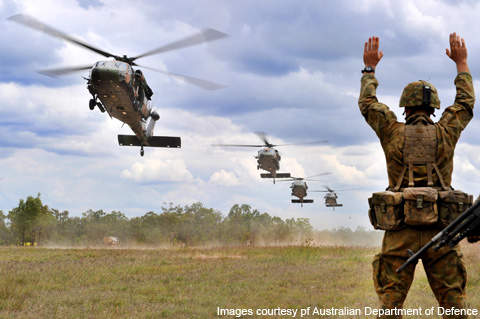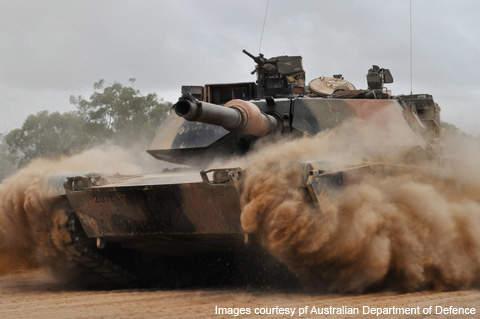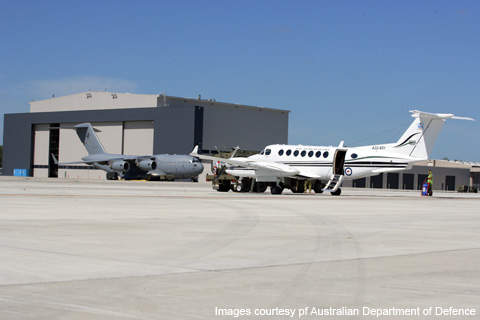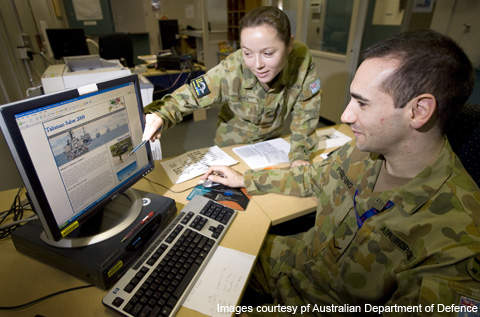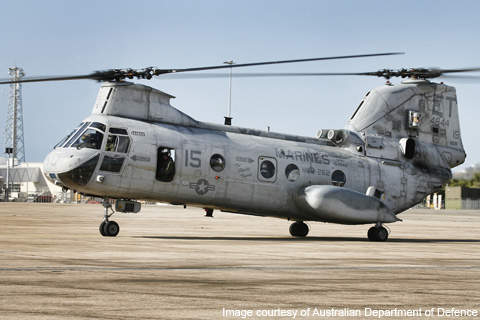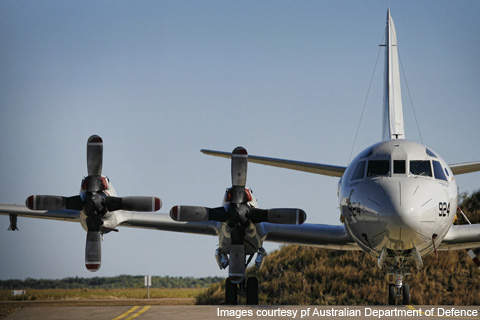The Royal Australian Air Force Base Townsville (YBTL) is a main fighter base located 7km from Townsville, Queensland. The base is one of the primary defence constellations in northern Australia and shares its runway with the nearby civilian Townsville Airport.
History
The site for RAAF Base Townsville was selected in 1939 after the Australian Department of Defence started to enhance Queensland’s northern defences in preparation for war between Japan and the USA.
Construction of two gravelled runways, a hangar with a control tower facility, workshops, mess, and dispersal taxiways began in early 1940 and was completed by end of the same year.
The base’s powerhouse, with its own diesel-powered generator, was opened in 1941 and was expanded in the same year. RAAF Base Townsville was renamed as RAAF Base Garbutt in 1942.
RAAF Base Garbutt terminated its fighter defence operations in 1942, while its bomber functions were wound down in 1943 after defeating Japan in New Guinea. No.35 Squadron was deployed at the base to endorse military missions. The base recorded 25,000 aircraft movements between October 1943 and December 1944. RAAF Base Garbutt was redesignated as RAAF Base Townsville in 1951.
Design and construction
The Australian Department of Defence undertook redevelopment of RAAF Base Townsville in two stages at a cost of AS$142 million (stage 1 was AS$70m and stage 2 AS$72m). Leighton Contractors was the prime contractor.
Stage 1 began in January 2000 to rectify deficits of the previous construction works at the base.
The scope of work included construction of hangars, a vehicle maintenance facility, a fuel tanker maintenance facility, crew rooms, an earth-covered operations building, workshop, office space, ordnance loading, and taxiway aprons. The works were completed in 2002.
The redevelopment works of Stage 2 included demolition of some old facilities and building transit accommodation, a combined mess facility, a combined headquarters building, an air movements terminal, a liquid dry breathing oxygen facility, a central emergency power station, a physical fitness centre, a dangerous goods store, and a base training complex.
Stage 2 redevelopment was completed in December 2003.
The 171 squadron of 5th Aviation Precinct was relocated from RAAF Base Townsville to Holsworthy Army Base in January 2007 to render the Australian Defence Force with a counter terrorism capability.
RAAF Base Townsville proposed a Multi Role Helicopter Facilities (MRH) Package 2 project to maintain and store the MRH90 helicopter, which was deployed at the base as replacement for the 171 Squadron.
The scope of work for this project included the renovation of a technical support troop facility, an ALSE workshop upgrade and a new store building.
The total cost of the project was AS$14m.
Construction of the project began in October 2008 and was completed in March 2010.
Garrison facilities
The base serves as headquarters for No.38 Squadron, No.44 Wing Detachment Townsville, Headquarters No.395 Expeditionary Combat Support Wing, No.1 Combat Logistics Squadron, and No.1 Air Terminal Squadron Detachment Townsville. It is also home to No.323 Combat Support Squadron, No.27 Squadron, Combat Survival Training School, 5th Aviation Regiment, Mechanical Equipment Operations and Maintenance Section, and 101 Squadron AAFC.
Air facilities
The RAAF Base Townsville features two asphalt-surfaced runways (01/19 and 07/25). The lengths of the two runways are 2,438m and 1,100m respectively. The YBTL can accommodate F1-11, FA-18, C-130, P3-C and C5 aircraft.
No. 44 wing DET TVL is owned by Surveillance and Response Group which operates 11 air traffic control (ATC) stations across Australia. It offers air traffic control technical ground electronic services (GES) to the YBTL. The wing provides radar control services to the Australian Defence Force (ADF). The control station keeps track of the foreign aircraft flying in the skies of Australia.
Other facilities
Personnel residing at the base are provided with training, transit accommodation, mess, recreation, rest rooms, sporting fields, cardiovascular training, dining facilities and medical care facilities.

